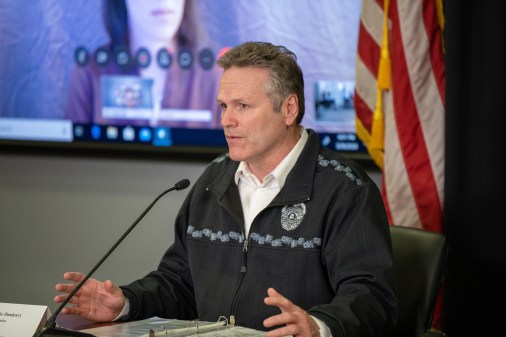States cut in half the number of K-12 students lacking high-speed broadband

Despite significant gains a majority of states made in expanding internet access in the nation’s schools in 2016, 11.6 million students in more than 19,000 schools are still without the minimum connectivity necessary for digital learning, according to a new report.
The report released Wednesday by EducationSuperHighway does credit state governors, however, for actions that gave an additional 10.4 million students high speed broadband connectivity over the past year, and “cutting in half the number of students and teachers without the tools they need for a 21st century education.”
The nonprofit estimates that 34.9 million students and 2.4 million teachers in 70,000 schools have sufficient high-speed internet access — of 100 kilobits per second or more per student — to support digital learning.
About 88 percent of U.S. school districts are now able to provide high-speed internet access to their students and teachers. That is up from 77 percent in 2015, and nearly three times the percentage shown in 2013, according to figures in the “2016 State of the States” report.
Perhaps more significantly, the number of students that now have high speed broadband connectivity represent a nearly nine-fold increase from 2013, when just 4 million had high-speed access from school, the report said.
“This incredible progress means many of America’s schools now have the same connectivity as top performing schools across the globe, giving their students the tools they need to prepare for and compete for 21st century jobs,” said Evan Marwell, CEO of EducationSuperHighway in a blog post highlighting the findings.
“In just a few years, America has taken significant steps to decrease its digital learning disadvantage and is now implementing innovative education technology in more classrooms than ever before,” he said. “But there’s more work to do.”
He noted more than 3,700 schools in predominantly rural areas lack high-speed infrastructure and more than 15,000 schools don’t have the necessary Wi-Fi infrastructure in their classrooms to support digital learning environments.
The report cited several reasons for the gains, crediting steps taken by 42 state governors and the efforts of the FCC for its overhaul of the federal E-rate program in 2014 which increased available funds to subsidize the cost of telecommunications services for schools and libraries.
The report also noted that advances in technology and lower broadband costs have also contributed to the growth in broadband access.
The latest estimates show 95 percent of schools have fiber-optic connections to the internet, up from 71 percent in 2013, and that the proportion of schools with sufficient Wi-Fi infrastructure in their classroom has more than tripled over that same period, from 25 percent in 2013 to 83 percent in 2016.
And more than 40 percent of U.S. school districts have been able to upgrade their broadband services — tripling their bandwidth capacity while only increasing their monthly recurring costs by 7 percent, the report showed.
School districts are clearly benefitting as well from a combination of technology enhancements at the provider level, more competitive pricing and better contract negotiations.
The report showed that the median cost of broadband service to K-12 schools has dropped by two-thirds since 2013, from $22 per megabits per second to $7 per Mbps in 2016.
The new report, available here, includes an interactive, state-by-state breakout of how states are progressing and an examination of how 15 leading service providers could help close the broadband equity gap.




